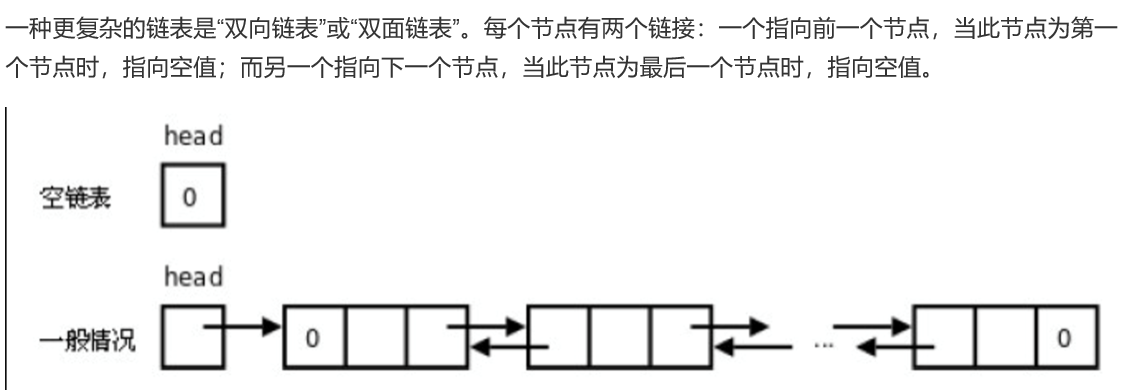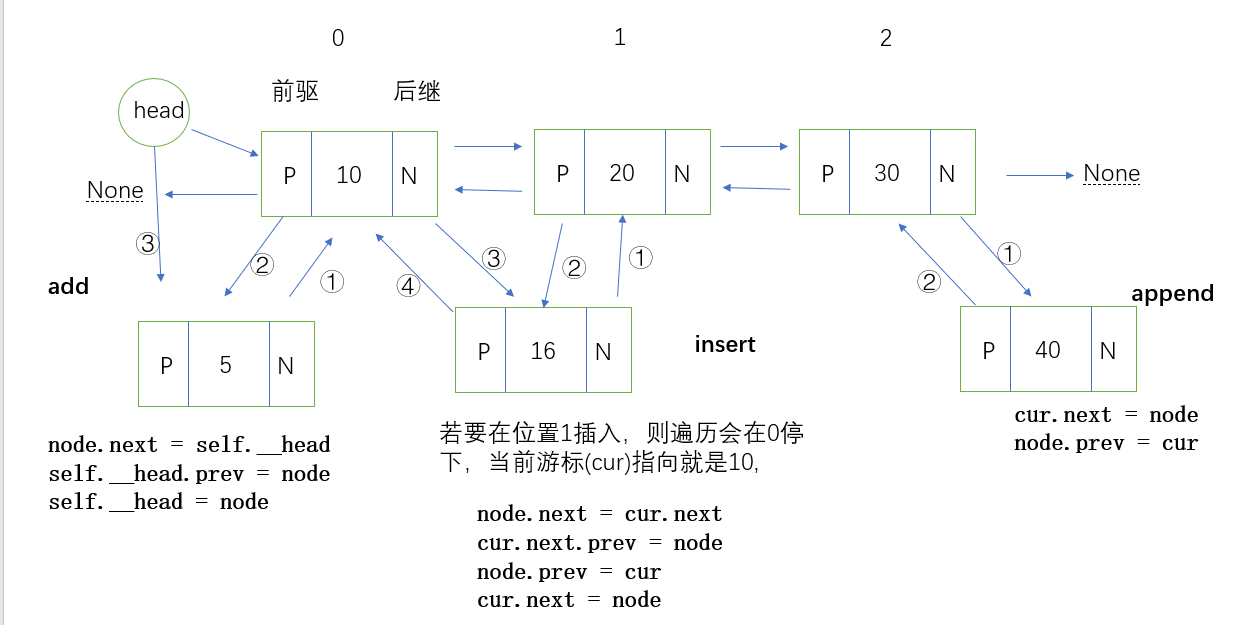引言

双向链表比之单向链表,多数操作方法的实现都没有什么不同,如is_empty, len, traverse, search。这些方法都没有涉及节点的变动,也就可通过继承单向链表来实现即可。
不同之处一是在于节点实现的不同。因为增加了指向前一个节点的前驱区,因此需要为节点添加一个新属性prev,用以指向前一个节点。
另外一点就是在做增删的操作时,需要额外考虑节点的前驱区的指向。其中的remove方法更是需要考虑多种特殊情况。
下面给出代码前,先放一个自己做的图示。(右键选择在新页面打开可看完整图示)

代码
class Node(object):
def __init__(self, value):
self.value = value
# 前驱区
self.prev = None
# 后继区
self.next = None
class LinkedListTwoway(object):
def __init__(self):
self.__head = None
def is_empty(self):
return self.__head is None
def __len__(self):
count = 0
cur = self.__head
while cur:
count += 1
cur = cur.next
return count
def traverse(self):
cur = self.__head
while cur:
print(cur.value)
cur = cur.next
def add(self, value):
node = Node(value)
if self.is_empty():
self.__head = node
else:
# 待插入节点的后继区指向原头节点
node.next = self.__head
# 原头节点的前驱区指向待插入节点
self.__head.prev = node
self.__head = node
def append(self, value):
node = Node(value)
cur = self.__head
if self.is_empty():
self.__head = Node
return
while cur.next:
cur = cur.next
cur.next = node
node.prev = cur
def insert(self, pos, value):
if pos <= 0:
self.add(value)
elif pos > len(self) - 1:
self.append(value)
else:
# 单向链表中为了在特定位置插入,要先在链表中找到待插入位置和其前一个位置
# 双向链表中就不需要两个游标了(当然单向链表中一个游标也是可以只找前一个位置)
node = Node(value)
count = 0
cur = self.__head
while count < pos - 1:
count += 1
cur = cur.next
# 此时的游标指向pos的前一个位置
# 这里的相互指向需尤为注意,有多种实现,需细细分析
node.next = cur.next
cur.next.prev = node
node.prev = cur
cur.next = node
def search(self, value):
cur = self.__head
while cur:
if cur.value == value:
return True
else:
cur = cur.next
return False
def remove(self, value):
if self.is_empty():
return
cur = self.__head
while cur:
if cur.value == value:
if cur == self.__head:
self.__head = cur.next
# 处理链表只有一个节点的特殊情况
if cur.next:
cur.next.prev = None
else:
cur.prev.next = cur.next
# 处理待删除节点是最后一个情况
if cur.next:
cur.next.prev = cur.prev
return
else:
cur = cur.next